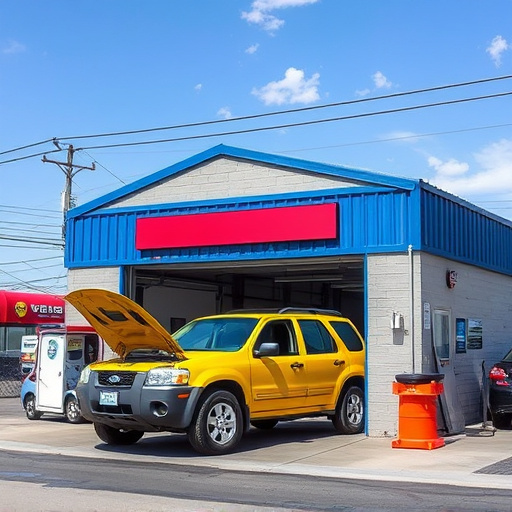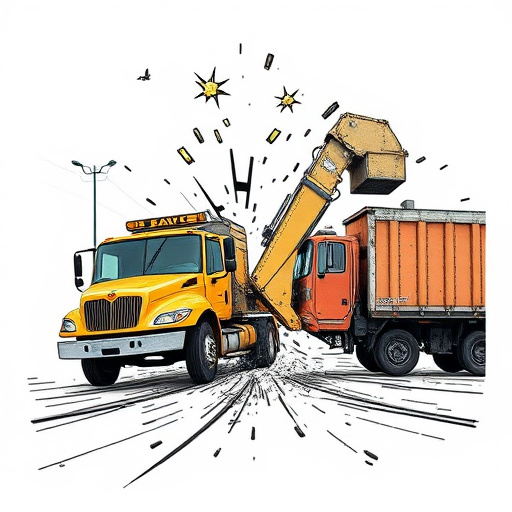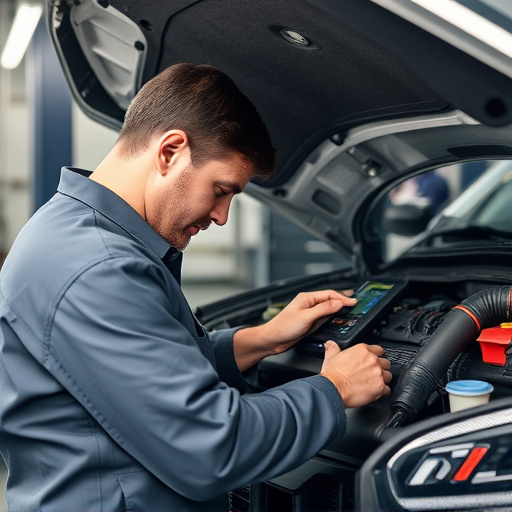Brake system collision checks are crucial safety measures after accidents, examining pads, rotors, calipers, and hydraulic systems to ensure optimal braking performance. Reputable mechanics conduct comprehensive tests, assessing physical damage and critical systems like brake fluid and master cylinders. Effective communication strategies using visual aids and analogies simplify these checks for drivers. Auto repair shops in the digital age leverage online tools to promote safety and cost savings through proactive maintenance, with collision centers emphasizing early issue identification and benefits of proactive care.
Stay safe on the road with our guide to educating customers about critical brake system collision checks. We break down what these checks entail, providing clear explanations that empower drivers. Explore effective communication strategies to ensure customers understand the importance of regular maintenance. Learn how to implement and promote these vital checks, fostering a culture of proactive safety. Discover actionable tips for keeping vehicles in top condition, minimizing risks, and enhancing overall driving peace of mind.
- Understanding Brake System Collision Checks
- Effective Communication Strategies for Customers
- Implementing and Promoting Regular Check-Ups
Understanding Brake System Collision Checks

A brake system collision check is a crucial safety measure that involves assessing and inspecting a vehicle’s braking mechanism after a collision or accident. This process is essential, especially in severe incidents where the impact might have caused damage to the brakes, which could compromise their functionality and put drivers at risk. During such checks, auto repair experts thoroughly examine components like brake pads, rotors, calipers, and hydraulic systems to ensure they are in optimal condition and capable of performing effectively.
For those seeking reliable auto repair near them, understanding the significance of these collision checks is vital. Mercedes Benz collision repair specialists or any reputable mechanic will perform comprehensive tests to identify potential issues. Even a minor bump or fender bender could affect braking performance, so a thorough inspection is key to ensuring safety on the road. This process not only involves checking for physical damage but also evaluating the brake fluid, master cylinder, and other critical systems to guarantee they function correctly after an accident.
Effective Communication Strategies for Customers

Educating customers about brake system collision checks is only half the battle; ensuring they understand and retain this information is crucial for safety and service retention. Effective communication strategies are essential to bridging the gap between technical knowledge and everyday driving experiences. Visual aids, such as diagrams or infographics, can simplify complex processes, making it easier for clients to grasp the importance of regular checks. Demonstrations and step-by-step videos can also be powerful tools, offering a more interactive learning experience that enhances comprehension.
Additionally, employing clear and concise language is vital. Avoid technical jargon as much as possible when explaining procedures like brake system collision checks, frame straightening, or vehicle paint repair. Use analogies or comparisons to everyday scenarios to help customers relate to the concepts. For instance, comparing a brake check to a routine health check-up can make it more relatable and encourage customers to prioritize their vehicle’s safety.
Implementing and Promoting Regular Check-Ups

In today’s digital era, educating customers about the importance of regular brake system collision checks is more accessible than ever. Auto repair shops can leverage online platforms and email newsletters to spread awareness, emphasizing that these checks aren’t just safety measures but also cost-saving initiatives. By promoting the benefits, such as improved braking performance and reduced repair costs, shops can encourage customers to schedule appointments proactively.
Collision repair services should be at the forefront of this education drive. Regular check-ups in a collision repair center can identify potential issues early on, preventing minor problems from escalating into costly repairs. Through targeted marketing campaigns, these centers can highlight their expertise and the positive impact of proactive maintenance on both vehicle longevity and driver safety.
Educating customers about brake system collision checks is vital for ensuring vehicle safety and preventing accidents. By implementing effective communication strategies, such as clear and concise information sessions, multilingual resources, and digital tutorials, businesses can reach a broader audience. Encouraging regular check-ups through promotions, reminders, and incentives fosters a culture of proactive maintenance. Remember that an informed customer base is key to minimizing collision risks on the road, making these strategies essential for any automotive service provider.














